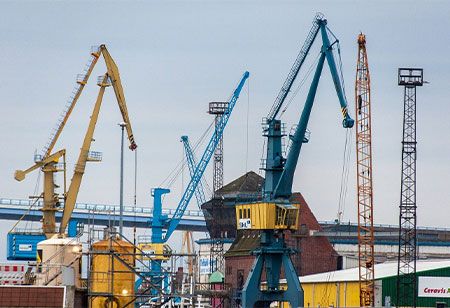
The global construction industry is facing several major challenges at the moment. But the good news is that these challenges are helping to reshape the industry’s trajectory. These difficulties stem from a complicated interplay of environmental issues, regulatory complexities, labor shortages, geo- political tensions, and economic uncertainties.
Even wedge anchor suppliers aren’t spared.
As the human race looks forward, it’s clear that industry will undergo a remarkable transformation, revolutionizing how the future is both built and designed.
Below are some of the key trends that’ll help shape the future of the construction industry. It is vital for all vital players to adapt to these trends to stay afloat and be a part of the greater good.
Worldwide economic growth has significantly slowed down recently amid tightening financial conditions and high inflation, which also happen to be constraining investment. Some of the challenges in the global construction industry include labor shortages and high-priced construction materials. Given these different factors, financial experts forecast decent growth in construction output.
On the brighter side, the industry looks to regain a little momentum this year. Assuming global economic stability improves, financial analysts predict a huge increase in output growth and higher annual averages.
The construction industry normally takes a very cautious approach when it comes to adopting new technologies. However, most construction companies are constantly changing their mindsets and beliefs when it comes to adapting to new technologies. Improving productivity is one of the main reasons why many eventually adopt new and advanced technology, followed by reducing costs and achieving greater competitiveness.
The ability to win new build contracts is another major reason why a lot of companies end up adopting new technologies in the end.
Modular construction methods and prefabrication are expected to be widely adopted in the coming years. The prefabricated construction space is expected to grow around 7.5% every year and, by 2030, might even surpass $150 billion. The benefits of prefabrication, such as increasing cost-efficiency, improving quality control, and reducing construction time, are encouraging its enhanced implementation across different construction spaces.
This isn’t a remedy for all the issues facing the construction industry. Modular construction and prefabrication often require module sizes and standardized designs. This can sometimes prove significantly limiting when dealing with complicated structural and architectural designs and models that might not readily align with certain modular dimensions.
Furthermore, transporting huge modular parts to the construction site from the factory can be very logistically difficult. Oversized modules might also need special route planning, permits, and coordination with different local authorities. Transport-related risks, like increased costs, delays, and module damage during transport, can occur if there’s a lack of proper management.
In a time where there’s increased environmental consciousness globally, sustainability will most likely be one of the most important things in the future of the construction industry. The green construction space might start to grow annually by over 9% and reach almost $400 billion in a couple of years. Adopting sustainable building practices, like renewable energy systems and energy-efficient materials, can result in huge cost savings all across the construction space.
Construction companies are always improving their assessment efforts, collaboration, and data monitoring. They’re doing this so that they can have better visibility of their own in-house processes and those of their supply chains and subcontractors as well. These insights can allow companies to take the necessary steps to reduce harmful emissions and lower costs.
With that said, sustainability might just be the most important trend when it comes to building the future. This is where a lot of construction companies are placing most of their focus.
We use cookies to ensure you get the best experience on our website. Read more...